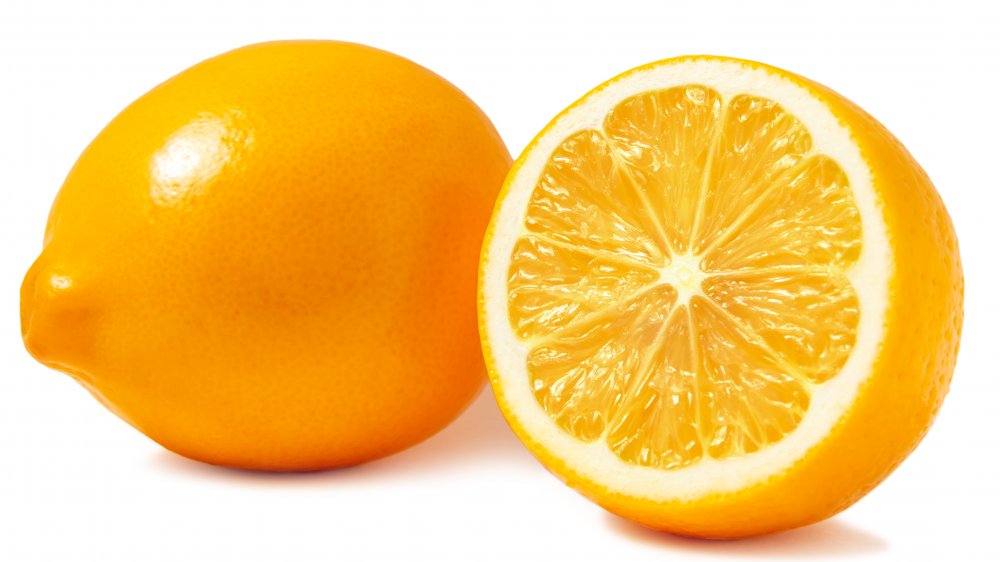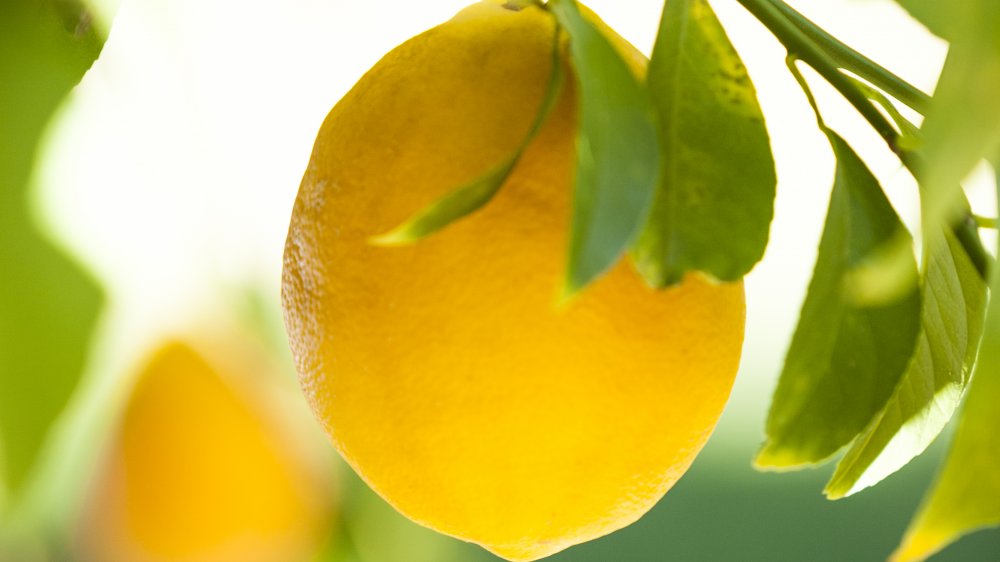The Real Difference Between Meyer Lemons And Regular Lemons
If the account given by the Pittsburgh Post-Gazette is to be believed, the end of the 2000s was an exciting time for citrus fans: "I'd read about them longingly for years before spying a pile at Whole Foods last winter and quickly became a Meyer lemon junkie." Now for many, a lemon may simply be a lemon. Unlike, say, apples, most supermarkets don't generally sell a large variety of lemons. So, when presented with the new, fancier citrus, many shoppers may be uncertain about why it's more expensive and whether they, like the Pittsburgh Post-Gazette, would consider it a cost worth paying.
The big difference between the Meyer lemon and the regular lemon is in its taste. "Sweet and juicy," is how Martha Stewart describes the fruit. "Bright yellow in color, they're plumper and less acidic than regular lemons, with thinner peels and a more floral scent." Apart from the fact that the peels are also edible, that's basically it. According to Cook's Illustrated, many suspect the Meyer lemon's unique flavor is due to it being a hybrid between the mandarin orange and the lemon. The outlet came to the consensus that you should use Meyer lemons when you want a nice, lemony flavor without the acidic boldness of a standard lemon. Looking for just that mellow lemony balance? ChowHound suggests that, in a pinch, you can substitute Meyer lemons with a mixture of lemon and equal parts orange, mandarin, or tangerine, zested or juiced depending on the recipe.
Meyer lemons have a variety of uses
Until relatively recently, the purpose of Meyer lemons was decorative, not culinary. NPR credits Frank Nicholas Meyer with this change, an agricultural explorer who was sent by the United States government to explore Asia in search of new plants. Meyer returned from the region with 2,500 plants, including the Meyer Lemon which he brought back from it's native China — where (of course) it is not called the Meyer lemon. In return, the U.S. government recognized his achievements by naming Meyer lemons after him. After a blight almost destroyed all American Meyer lemon trees, the Meyer lemon maintained a small amount of popularity among local farmers in Florida and California. That is, until Martha Stewart stumbled upon the lemon variant and lauded its properties to the world.
Today, the Meyer lemon has a seasonal, pricey place in stores like Whole Foods. However, you can still grow Meyer lemons for their original, aromatic purpose, as well as some (slightly smaller) edible fruits. The Kitchn enthused about how a friend's miniature citrus orchard brightened their house during the winter. This was possible because, as Four Wind Growers explains, "In a container, the semi dwarf trees will stay much smaller, especially with judicious pruning." Otherwise, the trees would grow to their regular 8 to 12 feet.
Of course, you can always just stick with using the natural sweetness of Meyer lemons to add an extra flare to cocktail mixtures or lemon pound cake.

